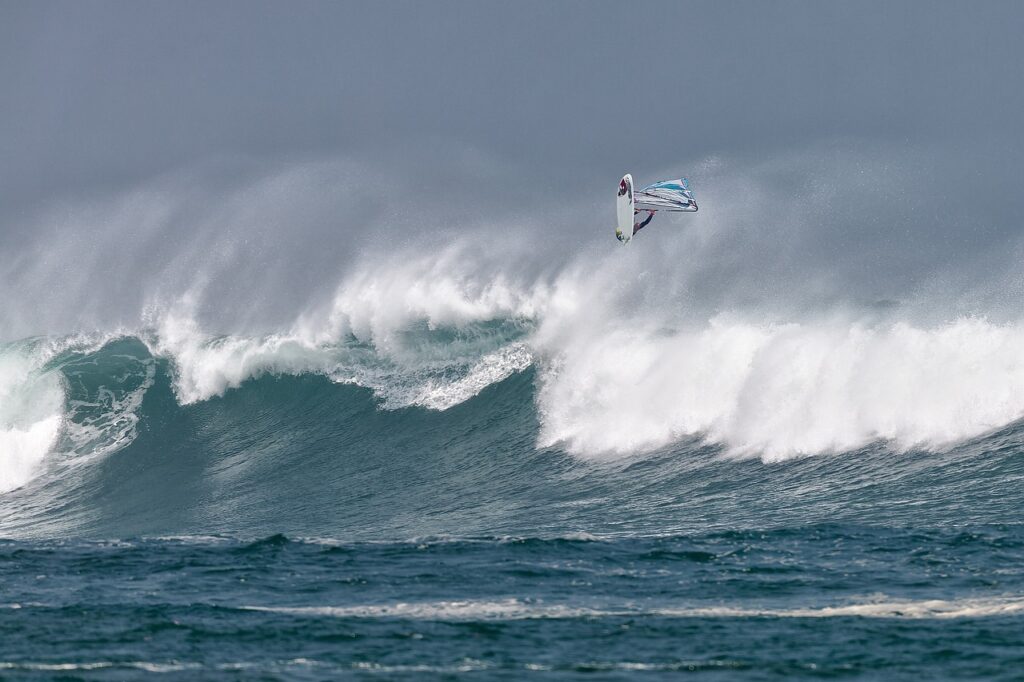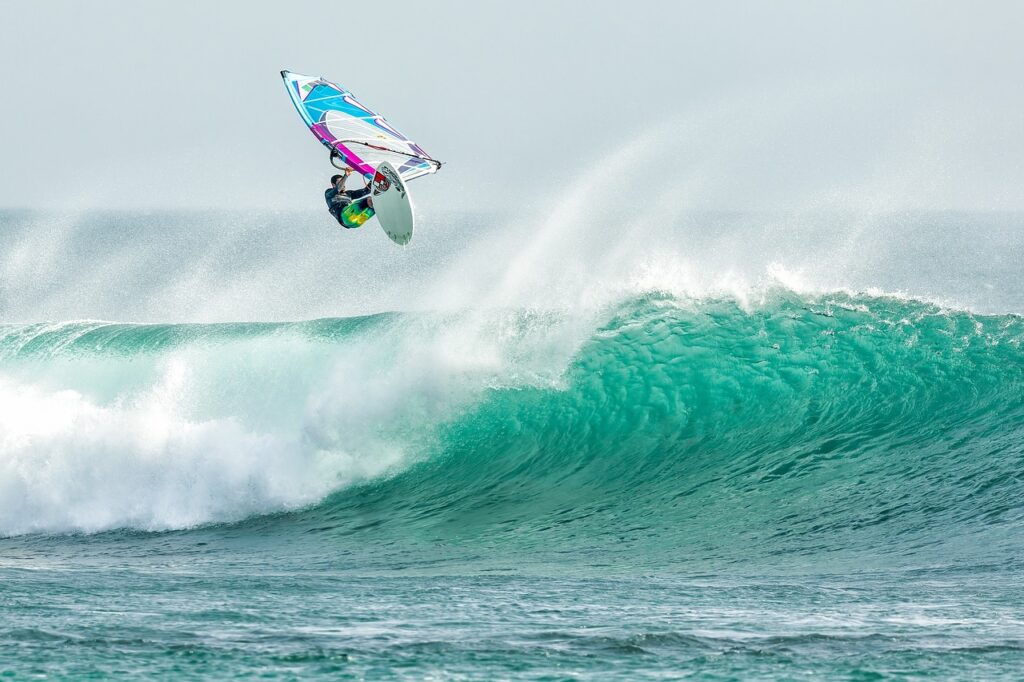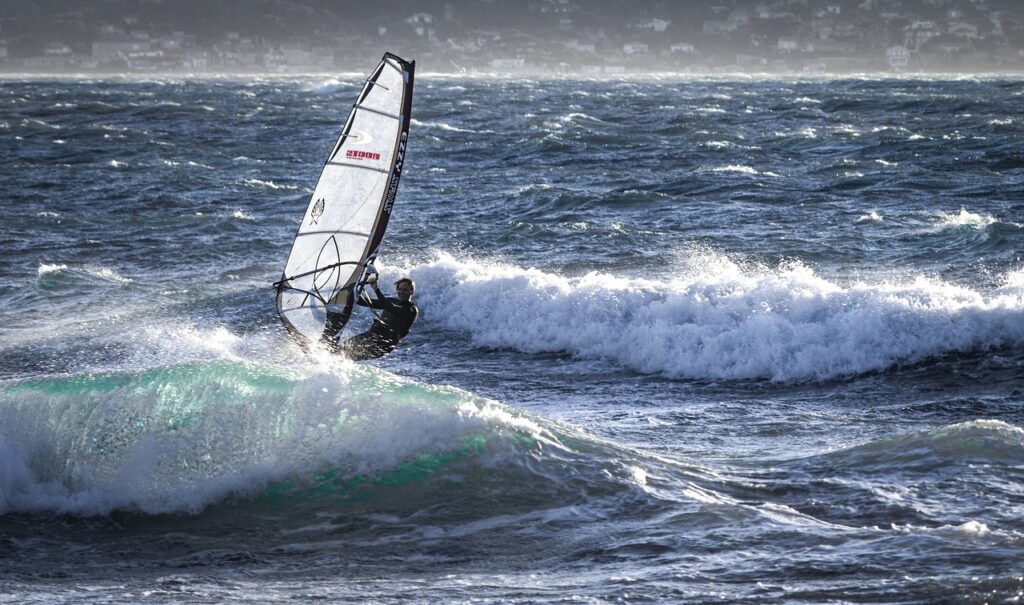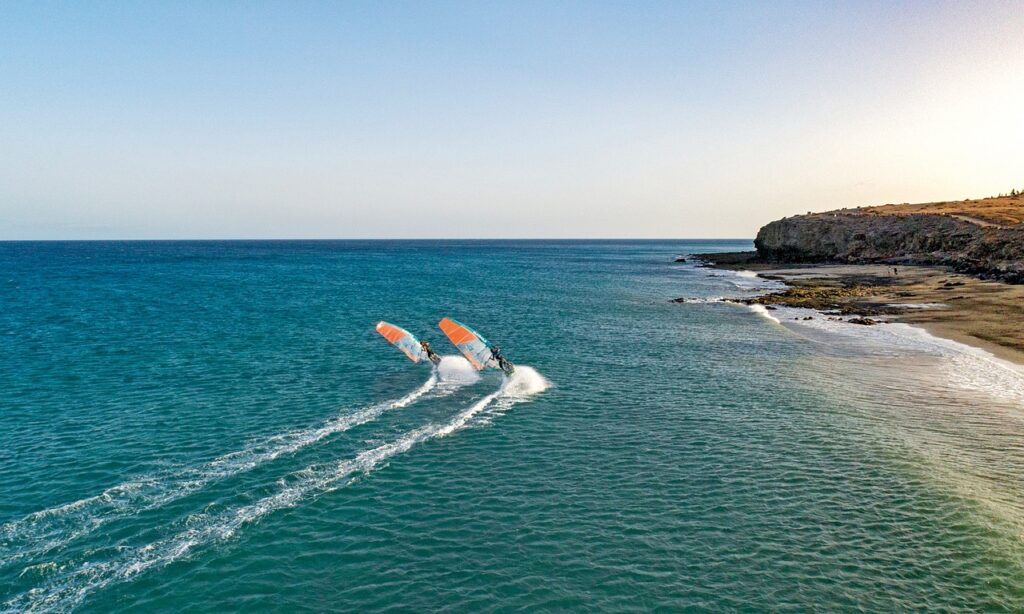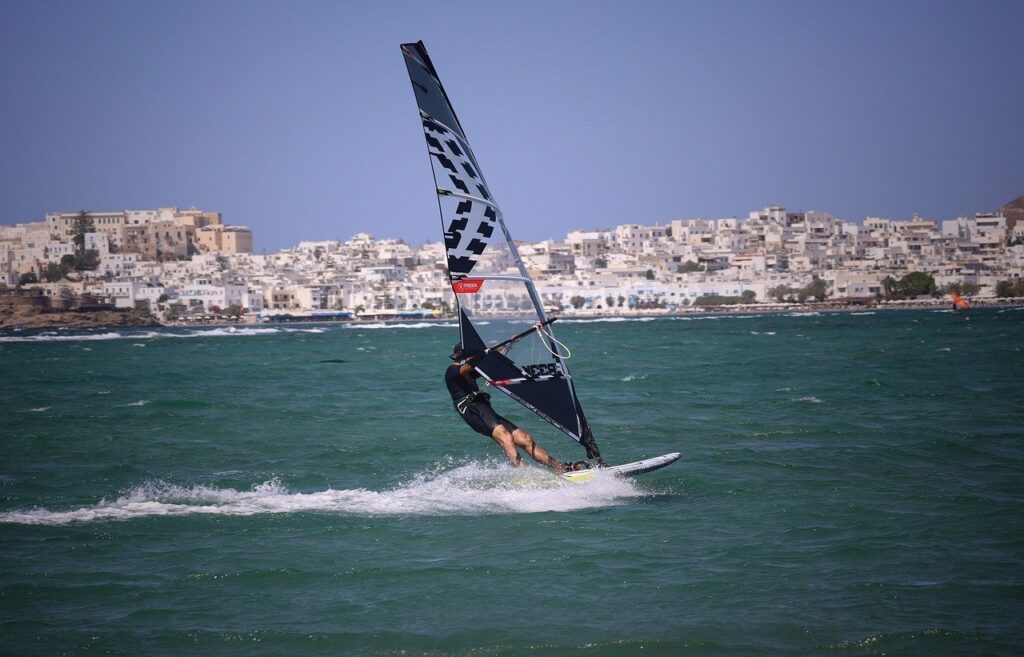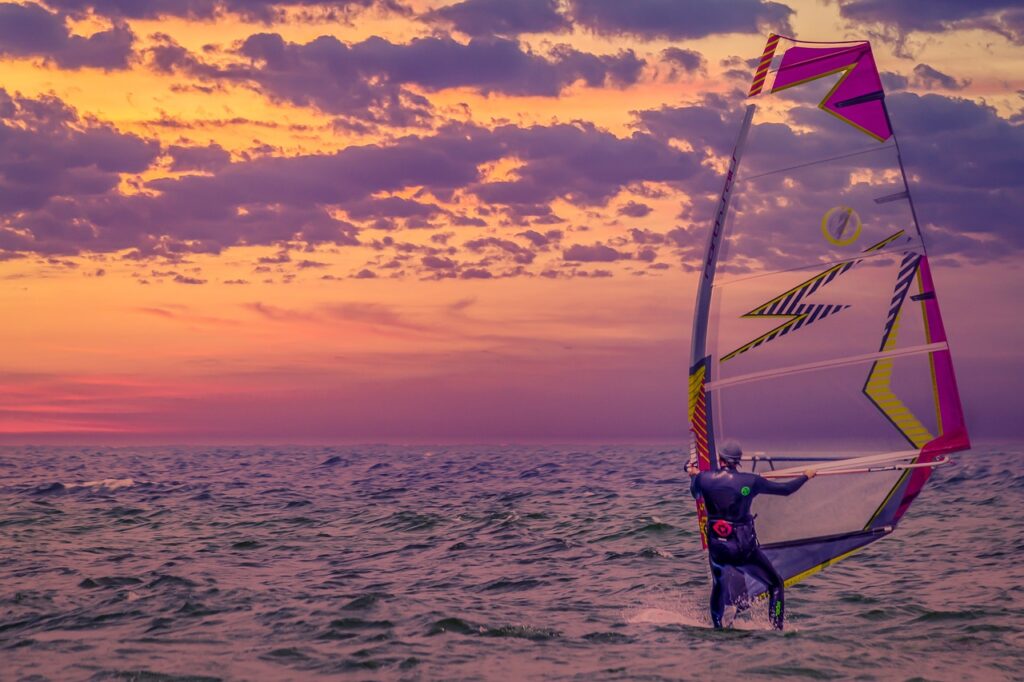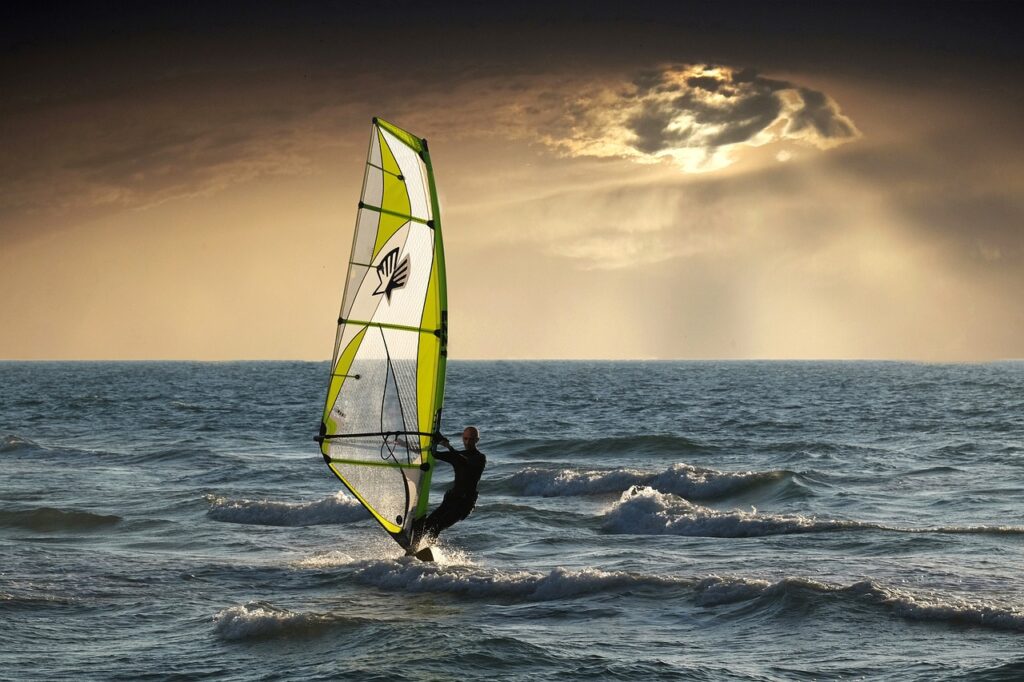Curious about what is windsurfing? Picture this: the exhilarating blend of surfing and sailing, where riders harness the power of the wind to glide across the water. Not just a sport like windsurf, but a thrilling adventure that combines skill and nature’s forces. Whether you’re a beginner seeking a new challenge or an experienced thrill-seeker craving excitement, windsurfing offers a unique experience like no other water sport.
Ready to dive into the world of windsurfing? Discover the rush of riding the waves, feeling the wind in your sails, and mastering the art of balancing on the board. Get ready for an adrenaline-pumping ride that will leave you craving more. Experience the freedom and excitement of windsurfing today!
Key Takeaways: What is Windsurfing?
- Get the Right Gear: Invest in essential gear like a board, sail, wetsuit, and harness to enhance your windsurfing experience.
- Start Slow and Learn Techniques: Begin with basic techniques and gradually progress to advanced skills to enjoy windsurfing safely and effectively.
- Join the Community: Connect with other windsurfers to learn, share experiences, and stay updated on competitions and safety tips.
- Safety First: Prioritize safety by following guidelines, wearing appropriate gear, being aware of weather conditions, and taking lessons from certified instructors.
- Progression is Key: Whether you’re a beginner or advanced windsurfer, focus on continuous improvement and practice to excel in different disciplines and possibly compete in windsurfing events.
- Have Fun on the Water: Ultimately, windsurfing is about enjoying the thrill of the sport while respecting the elements and fellow enthusiasts.
Understanding Windsurfing
Origins
Windsurfing traces its roots back to ancient Polynesian watercraft, where people used boards and sails to navigate the waters. Over time, this evolved into the modern sport we know today.
The concept of using a sail for propulsion on a board has been around for centuries, with various cultures incorporating similar ideas in their water activities like windsurf.
Evolution
In the 20th century, key inventors played crucial roles in shaping windsurfing into a popular recreational activity. In the 1960s and 1970s, pioneers like Hoyle Schweitzer and Jim Drake developed the first mass-produced windsurfing boards, revolutionizing the sport.
The milestones in windsurfing history include the introduction of lightweight materials, improved rig designs, and advancements in board shapes, leading to enhanced performance and maneuverability on the water.
Combination of Sailing and Surfing
Windsurfing uniquely combines elements of both sailing and surfing. Participants harness the power of the wind to windsurf, propel themselves across the water, utilizing techniques from both sports to navigate waves and perform tricks.
- Pros:
- Provides a thrilling experience that blends the excitement of surfing with the strategic aspects of sailing.
- Offers a full-body workout, engaging muscles in the arms, legs, and core while improving balance and coordination.
- Cons:
- Requires learning specific skills such as rigging the sail, steering the board, and balancing effectively.
- Dependent on wind conditions, making it necessary to choose suitable locations for optimal windsurfing experiences.
Notable Figures
Throughout its history, windsurfing has seen notable figures who have contributed significantly to its growth and popularity. Athletes like Robby Naish and Sarah-Quita Offringa have dominated competitive windsurfing circuits, inspiring enthusiasts worldwide.
Essential Gear for Windsurfing
Boards
Windsurfing equipment includes a board, which is the primary component of the sport. These boards are typically made of lightweight materials like fiberglass or carbon fiber. The design and size of the board vary depending on the wind conditions and the rider’s skill level.
Boards for beginners are usually wider and more stable to help with balance, while advanced riders prefer narrower and more maneuverable boards for tricks and speed. Understanding the right board size for different conditions is crucial for an enjoyable windsurfing experience.
Sails, Masts, and Booms
Another essential part of windsurfing equipment is the sail, mast, and boom. The sail catches the wind and propels the board forward, while the mast provides structure and stability. Booms are used to control the sail and steer the board.
Sail sizes vary based on wind strength, with smaller sails suitable for stronger winds and larger sails for lighter breezes. Masts also come in different lengths to accommodate various sail sizes. Choosing the right combination of sail, mast, and boom is vital for optimal performance on the water.
Bodies of Water
Windsurfing can take place on various types of bodies of water, each offering unique challenges and experiences. Lakes provide calm waters ideal for beginners to practice basic skills without strong currents or waves.
On the other hand, coastal areas offer more challenging conditions with varying wind strengths and wave heights, making them perfect for intermediate to advanced windsurfers seeking adrenaline-pumping rides. Rivers present a different setting with flowing currents that require additional skills to navigate effectively.
Pros:
- Versatile gear options cater to different skill levels.
- Windsurfing can be enjoyed in various scenic locations like lakes, oceans, and rivers.
Cons:
- Acquiring all necessary gear can be expensive for beginners.
- Mastering windsurfing techniques may require time and dedication.
Techniques and Disciplines: What is Windsurfing?
Mastering Disciplines
Master various windsurfing disciplines to excel in this thrilling water sport. From slalom racing to wave sailing and freestyle, each discipline offers unique challenges and excitement.
Exploring Techniques
Dive into the techniques required for windsurfing to enhance your skills on the board. Learn how to perform jumps, perfect the art of carving waves, and master the skill of accelerating on different water surfaces.
Speed Sailing and Hydro Foiling
Explore the exhilarating world of speed sailing where windsurfers reach incredible speeds, pushing the limits of their abilities. Venture into the fascinating realm of hydro foiling, a technique that allows windsurfers to glide effortlessly above the water’s surface.
Windsurfing for Beginners
Basic Techniques
To start recreational windsurfing as a beginner, focus on mastering fundamental techniques. Begin by understanding how to sailboarding harnesses the power of the wind. Learning how to control the sail is crucial for steering and maneuvering on the water.
While indoor windsurfing can provide initial practice, transitioning to outdoor conditions is essential. Practice balancing on the board in calm waters before progressing to more challenging environments. Understanding wind patterns and their impact on sailing is key to becoming a proficient windsurfer.
Essential Skills
As a novice windsurfer, developing balance and coordination is vital. Utilize a windsurfing school to grasp basic skills such as rigging the sail and maintaining stability on the board. Progress from kneeling to standing position gradually to enhance control and stability.
Mastering turning techniques is essential for navigating varying wind conditions effectively. Learn how to adjust the sail angle to catch the wind efficiently and propel the board forward. Regular practice and guidance from experienced recreational windsurfers can significantly improve your skills.
Equipment Selection
Choosing the right equipment is crucial for beginners venturing into windsurfing. Opt for inflatable windsurfing boards for added stability and easier transportation. Select a suitable windsurfing sail based on your skill level and prevailing wind conditions.
Invest in a quality windsurfer that suits your weight and skill level to enhance your learning experience. Consider enrolling in beginner-friendly windsurfing schools that provide access to necessary equipment and expert guidance. Finding suitable learning locations with calm waters and consistent wind conditions is ideal for honing your skills.
Advanced Windsurfing Skills
Maneuver Techniques
Enhance your windsurfing skills by mastering high-speed maneuvers and executing complex jumps. These advanced techniques require precise control and coordination to navigate the water efficiently. Practice maneuvers like carving jibes and powerful turns to improve your overall performance on the board.
Explore the intricacies of executing these maneuvers in different wind conditions to become a versatile windsurfer. Utilize the power of the wind to propel yourself through various tricks and turns with finesse. Understanding the dynamics of wind patterns and sail positioning is crucial for executing maneuvers effectively.
Challenges and Rewards
Mastering advanced windsurfing skills presents a unique set of challenges and rewards. Overcoming obstacles such as mastering intricate footwork and maintaining balance in high winds can be daunting but rewarding. The thrill of successfully executing a challenging maneuver or jump is unmatched in the world of windsurfing.
Embrace the learning curve and stay persistent in honing your skills to unlock new possibilities on the water. Pushing your limits and conquering difficult maneuvers will not only enhance your performance but also boost your confidence as a windsurfer. The sense of achievement that comes with mastering advanced skills is truly gratifying.
Specialized Training Programs
Dive into specialized training programs tailored to help you advance your windsurfing abilities. Join freestyle windsurfing clinics or enroll in speed windsurfing workshops to refine your techniques under expert guidance. These programs offer personalized coaching and feedback to accelerate your progress in mastering advanced skills.
Access resources such as online tutorials, instructional videos, and interactive forums to supplement your training. Engage with fellow windsurfers to exchange tips, tricks, and insights into improving your performance on the board. Embracing a continuous learning mindset is key to evolving as a proficient windsurfer.
Windsurfing Competitions
Competitive Formats
Windsurfing competitions range from local contests to international championships. Athletes showcase their skills in various disciplines like slalom, racing, and wave riding. The competitive formats often include timed races around buoys, freestyle tricks, and wave performance.
Competitors in indoor windsurfing competitions display their agility and precision in controlled environments. These events attract a unique audience due to the thrilling nature of windsurfing performed indoors. The technical aspects of indoor competitions differ from traditional outdoor events, challenging athletes in new ways.
Top Athletes
Olympic windsurfing has seen extraordinary athletes dominating the sport. Names like Dorian van Rijsselberghe and Marina Alabau have left a significant mark on the windsurfing world with their exceptional skills and consistent performances. These athletes not only excel in competitions but also inspire the next generation of windsurfers.
Windsurfing champions often participate in competitive windsurfing circuits that span across different countries. These circuits serve as platforms for athletes to showcase their talents and compete against the best in the world. The dedication and hard work of these athletes elevate the level of competition, pushing the boundaries of what is achievable in windsurfing.
Impact on the Sport
The inclusion of windsurfing as an Olympic sport has further elevated its status and popularity worldwide. Olympic windsurfing racing classes bring together top athletes from various nations to compete at the highest level. This exposure not only boosts the profile of windsurfing but also attracts more enthusiasts to engage with the sport.
Windsurfing competitions play a crucial role in driving innovation in equipment design, such as windsurfing sails and boards. Companies like Windsurf International constantly push boundaries to create cutting-edge gear that enhances performance on the water. The competitive spirit within the industry fosters continuous improvement and evolution in windsurfing equipment.
Safety Tips in Windsurfing
Weather Conditions
Check weather forecasts before windsurfing to avoid unexpected storms or unfavorable conditions. Windsurf in areas with consistent wind patterns and clear visibility for a safer experience.
Equipment Maintenance
Ensure your equipment is in good condition by regularly inspecting the board, sail, and harness. Replace worn-out parts and keep a repair kit handy for quick fixes on the go.
Rescue Procedures
Familiarize yourself with rescue techniques like self-rescue and assisting others in distress. Carry a whistle and know how to signal for help if needed.
Safety Protocols
Follow safety guidelines such as wearing a life jacket and using a leg rope to stay connected to your board. Avoid crowded areas and respect other water users to prevent collisions.
Training and Supervision
Take lessons from certified instructors to learn proper techniques and safety measures. Practice in controlled environments under supervision before venturing into challenging waters.
Joining the Windsurfing Community
Online Platforms
Engage with online platforms dedicated to windsurfing, offering a wealth of resources, from tutorials to gear reviews. Connect with like-minded individuals globally.
Explore forums where enthusiasts share tips and tricks, fostering a sense of camaraderie within the windsurfing community. Stay updated on the latest trends and innovations in windsurfing technology.
Clubs & Events
Join local windsurfing clubs to meet fellow enthusiasts and participate in group outings and competitions. Benefit from shared knowledge and experiences while building lasting friendships.
Attend windsurfing events, such as regattas and championships, to witness top athletes in action and immerse yourself in the vibrant windsurfing culture. Take part in workshops and clinics to enhance your skills.
Networking Opportunities
Leverage school programs and training sessions to refine your windsurfing techniques under the guidance of experienced instructors. Build a solid foundation for your windsurfing journey.
Connect with professionals in the windsurfing industry through mentorship programs and workshops. Gain valuable insights and advice to elevate your skills and career prospects within the windsurfing community.
Closing Thoughts
You’ve delved into the world of windsurfing, from understanding its basics to mastering advanced skills. Equipped with knowledge about gear, techniques, and safety, you’re ready to ride the waves confidently. Whether you’re a beginner or eyeing competitions, windsurfing offers a thrilling experience that blends adrenaline with nature’s beauty.
Now, it’s time to grab your board, feel the wind in your sails, and embark on your windsurfing journey. Join the vibrant community, challenge yourself, and embrace the freedom that comes with gliding across the water. Get out there, practice your moves, and enjoy the exhilarating ride!
Frequently Asked Questions
What is windsurfing?
Windsurfing is a water sport that combines elements of surfing and sailing. Participants use a board with a sail attached to maneuver through the water using wind power.
Is windsurfing suitable for beginners?
Yes, windsurfing can be enjoyed by beginners with proper instruction and practice. Starting with beginner-friendly equipment and lessons can help new windsurfers learn the basics quickly.
What gear is essential for windsurfing?
Essential gear for windsurfing includes a board, sail, mast, boom, wetsuit, harness, and life jacket. Having the right equipment ensures safety and enhances your windsurfing experience.
Are there different techniques and disciplines in windsurfing?
Yes, windsurfing offers various disciplines such as wave sailing, freestyle, slalom racing, and more. Each discipline requires specific skills and techniques to master, catering to different preferences and abilities.
How can I stay safe while windsurfing?
To stay safe while windsurfing, always wear a life jacket, know your limits, check weather conditions, avoid offshore winds, and take lessons from certified instructors. Prioritizing safety measures reduces risks and enhances your enjoyment of the sport.

